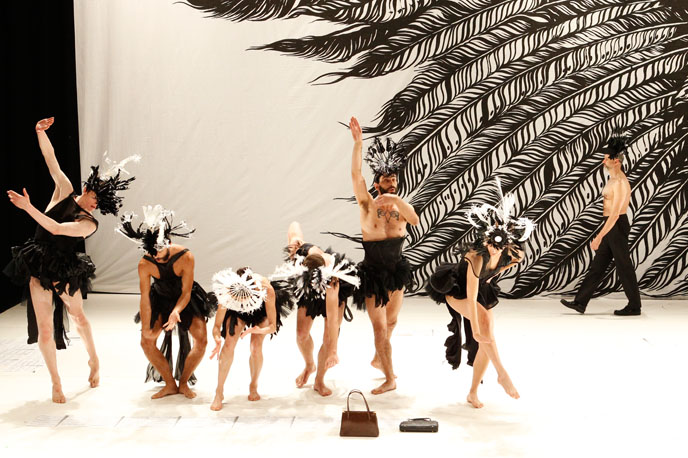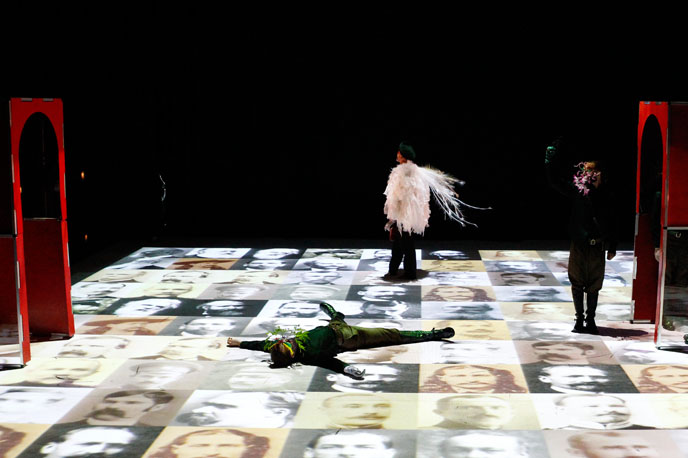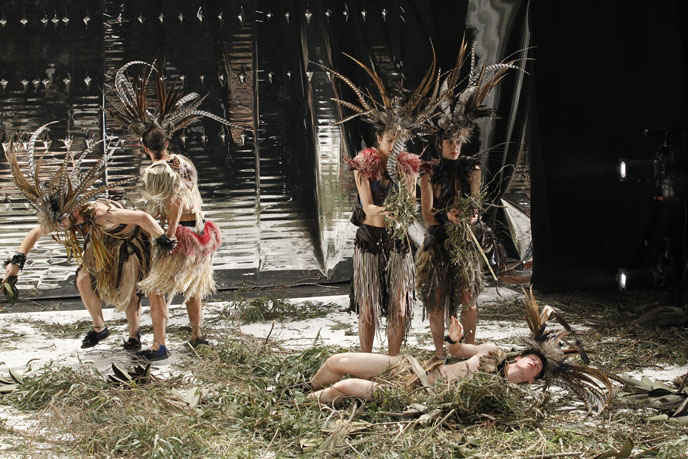Pre-performance…
I’m a bit of a dance nut, as many of my friends know. It’s been quite some time since I have taken a dance class, but nevertheless I LOVE dance: watching as well as doing.
So at the moment in Hobart the Mona Foma festival is on, which means that for roughly a week there are different music and art events being held every day around the city. This year there is a dance performance on as part of this festival. It is called Aviary and is performed by a Melbourne dance company: BalletLab.
(BalletLab performed a trio of dance pieces at MOFO last year – the performances were free, however they didn’t advertise the fact that you had to collect a free ticket in advance to be able to attend the performance. I spent several hours waiting around for the performance only to be denied entry, and was furious!!)
This year I was on the ball, got the info early and booked tickets for Aviary.
As the name implies, the performance is about birds. “Aviary is a fantasia of contemporary movement and exotic birdlife, set against the avian-inspired 20th century idiom of French composer Oliver Messiaen’s Catalogue d’Oiseaux (1958). Between the twitchy agitation of British New Wave, recordings of birdsong and the paradise of the New Guinea jungle, this is a dance performance of uncommon adornment and flamboyance.“
After having watched a video clip or two about the performance, I am very intrigued as to what it will be like. I don’t expect it to be a traditional ballet in any way, and am pretty sure its going to be very ‘out there’. I’m looking forward to it…
Aviary from Phillip Adams BalletLab on Vimeo.
Post-performance…
First of all quoting from the program:
“Aviary is a romantic, exotic and visual art-based contemporary dance performance that pays homage to the spectacle fo the bird. It is a suite of experimental articulations based on French composer Olivier Messiaen’s Catalogue d’oiseaux, written in the 1950’s. These musical scores for the bird are interpreted through classical, modern and contemporary idioms, staged in a flamboyant rethink of paradise.
The suite arrangement implies a non-linking narrative structure. The scores are translated into different social, cultural and chronological locations: a contemporary experimental dance improvisation, a 1980s erotic disco floor, and a jungle in New Guinea.”
The first piece, Les oiseaux en cage, was set using black and white. The stage was lit with a very bright white, onto a white stage, with a white backdrop with a crisp black image on it. The dancers wore dress type outfits of black feathers and their movement utilised classical ballet to portray birdlike gestures. It was choreographed to look chaotic yet structured. The musical score was simple and supported by the dancers squawking like birds.
I quite enjoyed the first piece.

The second piece, Le coq dandy, set in “a 1980s erotic disco” used some phone booth type props and was lit with a grid of ever changing colours and pictures on the floor. The main dancers were dressed in soldier uniforms with birdlike headpieces on. There was a central character in the piece, who wore a suit with a jacket of white feathers to represent a broad white wingspan. The central character came across as a sleaze in a nightclub, trying to seduce and pickup people. The music was way too loud and pounded the ears and the movement style was modern, upright and quite angular at times.
This piece seemed very disjointed from the first and it was hard to grasp what it was about. I didn’t particularly enjoy it.

The third piece, Paradis, was much easier to understand. Its setting in a “jungle in New Guinea” was quite clear through the branches and leaves on the floor of the stage. The dancers came onto the stage by each doing a short solo, to the sound of the piano being played. The sounds produced by the piano linked into to the characteristics being displayed by each of the birds, typically higher pitched short sharp sounds were used for females, and longer, deeper, louder sounds for males. This one-by-one introduction to each of the birds was done well, with each bird giving a little ‘display’ as they may to another bird in the wild. The dancers were dressed in varying tones of brown, with headdress’ of long brown feathers. The movement type of this piece would be considered more contemporary and did not seem to have any of the structure of classical movement. Throughout the piece the birds formed different parings and went about different aspects of their mating rituals, I assume. They would scratch around and rifle through the sticks and leaves, gather what they wanted and carry them off to another spot to ‘nest’, and also take moments to ‘present’ themselves to another bird, or have a roll in the leaves with their mate. While this piece started off really interesting, it was quite long and as the music and movement built up and up, it then plateau’d and stayed where it was for quite some time before the piece simply ended.

All in all, I quite enjoyed the performance, though I did find it rather disconnected and confusing, however I think that was part of the choreographic intent.
